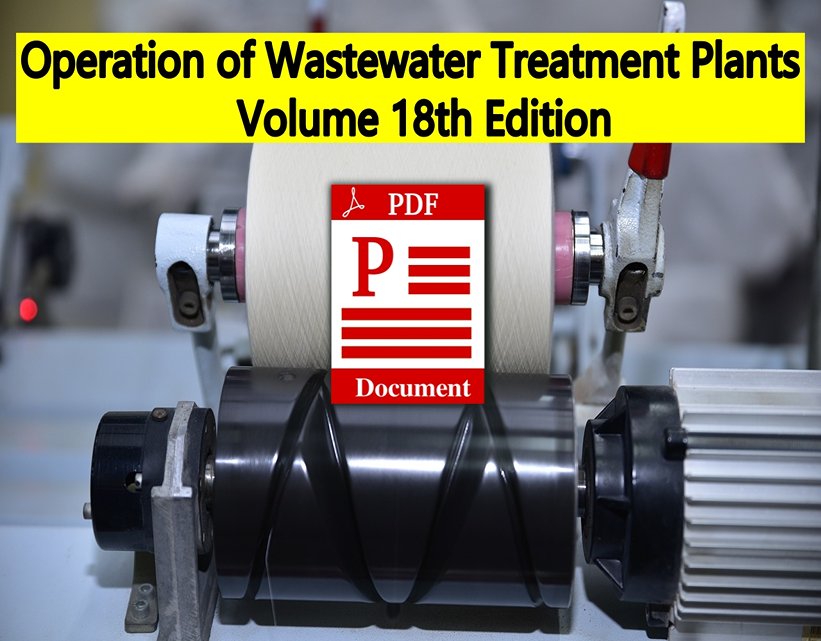[PDF] Operation of Wastewater Treatment Plants Volume 18th Edition Pdf 2024
Definition of wastewater treatment plants
Wastewater treatment plants, also known as sewage treatment plants, are facilities designed to remove contaminants from wastewater before it is released back into the environment. These plants play a crucial role in maintaining the health and cleanliness of our water sources, as well as protecting public health. Wastewater treatment involves a series of processes that aim to remove pollutants, organic matter, and pathogens from the water, making it safe to be discharged into rivers, lakes, or oceans.
Importance of wastewater treatment plants for public health and environmental protection
Wastewater treatment plants are essential for maintaining the quality of our water sources and safeguarding public health. By removing contaminants, organic matter, and pathogens from wastewater, these facilities ensure that the water being discharged into rivers, lakes, or oceans is safe for both humans and the environment. Without effective wastewater treatment, the release of untreated wastewater could lead to the spread of diseases, the contamination of drinking water sources, and harm to aquatic ecosystems. Therefore, the importance of wastewater treatment plants cannot be overstated in terms of public health and environmental protection.
Overview of the essay’s structure and main points
In this essay, we will provide an overview of the structure and main points that will be discussed in relation to the importance of wastewater treatment plants. Firstly, we will examine the process of wastewater treatment and the various steps involved in removing contaminants and pathogens. Secondly, we will discuss the potential consequences of releasing untreated wastewater into the environment, including the spread of diseases and the contamination of drinking water sources. Finally, we will highlight the crucial role that wastewater treatment plants play in safeguarding public health and protecting the environment. [PDF] Operation of Wastewater Treatment Plants Volume 18th Edition Pdf 2024
Wastewater Treatment Process
Preliminary Treatment
Grit removal to separate heavy particles
Grit removal to separate heavy particles like sand and gravel from the wastewater. This is usually done through a grit chamber where the velocity of the wastewater is reduced, allowing the heavier particles to settle at the bottom. Once settled, the grit is removed and properly disposed of to prevent any damage to the treatment equipment or the environment. Grit removal is an important step in the wastewater treatment process as it helps protect downstream equipment from abrasion and reduces the potential for clogging or blockages.
Primary sedimentation to allow suspended solids
Primary sedimentation allows suspended solids to settle out the wastewater. In this step, the wastewater flow is slowed down, allowing the heavier suspended solids to sink to the bottom of the sedimentation tank. These settled solids, known as primary sludge, are then collected and removed from the tank. The primary sedimentation process helps to reduce the organic load in the wastewater and prepares it for further treatment in the secondary treatment stage. By removing a significant amount of solids, primary sedimentation plays a crucial role in improving the overall efficiency of the wastewater treatment process. [PDF] Operation of Wastewater Treatment Plants Volume 18th Edition Pdf 2024
Secondary Treatment
Biological treatment using microorganisms to break down organic matter is the next step in the wastewater treatment process. In this stage, the wastewater is transferred to a secondary treatment tank where it undergoes aeration. Microorganisms, such as bacteria and fungi, are introduced into the tank to consume the remaining organic matter in the wastewater. These microorganisms break down the organic compounds through a process called oxidation, converting them into simpler substances like carbon dioxide and water. This biological treatment effectively removes pollutants and harmful substances from the wastewater, making it safer for release back into the environment.
Aeration to provide oxygen for the microorganisms
Aeration to provide oxygen for the microorganisms is essential for their survival and efficient breakdown of the organic matter. Without sufficient oxygen, the microorganisms would not be able to carry out the oxidation process effectively. Aeration also helps in maintaining the optimal conditions for the growth and activity of the microorganisms, ensuring a thorough treatment of the wastewater. Overall, aeration plays a crucial role in the success of the secondary treatment process and the overall purification of the wastewater. [PDF] Operation of Wastewater Treatment Plants Volume 18th Edition Pdf 2024
Tertiary Treatment
Filtration to remove any remaining solid particles
After the settling tanks have separated the biological solids from the treated water, the next step in the wastewater treatment process is tertiary treatment. This stage involves filtration to remove any remaining solid particles that may have escaped the settling tanks. Filtration ensures that the water is free from any visible impurities and ready for the final step, disinfection. Disinfection is essential to eliminate any harmful pathogens that may still be present in the water, making it safe for discharge into the environment. Together, these steps ensure a thorough purification of the wastewater and protect public health and the environment.
Disinfection to kill harmful bacteria and viruses
Disinfection to kill harmful bacteria and viruses is typically achieved through the use of chemicals such as chlorine or ultraviolet (UV) radiation. Chlorine is commonly used as it is highly effective in killing a wide range of microorganisms. It can be added directly to the water or generated on-site using chlorine gas or sodium hypochlorite. UV radiation, on the other hand, uses ultraviolet light to disrupt the DNA of microorganisms, rendering them unable to reproduce and causing their death. Both methods have their advantages and disadvantages, and the choice of disinfection method may depend on factors such as cost, and effectiveness. [PDF] Operation of Wastewater Treatment Plants Volume 18th Edition Pdf 2024
Operation and Maintenance of Wastewater Treatment Plants
Monitoring of inflow and outflow rates and quality parameters
Monitoring of inflow and outflow rates and quality parameters of the wastewater is essential in daily operations. This includes monitoring the influent and effluent flow rates, as well as key quality parameters such as pH, turbidity, and dissolved oxygen levels. Regular monitoring allows operators to identify any deviations from desired levels and take corrective actions promptly. Additionally, routine maintenance of equipment, such as pumps, filters, and disinfection systems, is crucial to ensure their optimal performance and prevent any operational disruptions. Proper operation and maintenance of wastewater treatment plants are vital to ensure the efficient and effective removal of nutrients and pollutants, ultimately protecting the environment and public health. [PDF] Operation of Wastewater Treatment Plants Volume 18th Edition Pdf 2024
Adjustment of treatment processes based on operational
Adjustment of treatment processes based on operational that is also a key component of maintaining wastewater treatment plant efficiency. By analyzing data on influent and effluent quality, operators can make informed decisions about adjusting the treatment processes to meet changing environmental conditions or regulatory requirements. This flexibility allows the plant to adapt to any fluctuations in incoming wastewater characteristics and ensure consistent treatment performance. Overall, the continuous evaluation and adjustment of treatment processes based on operational data play a crucial role in achieving optimal wastewater treatment outcomes.













